Discover the joy of sewing adorable baby rompers with free PDF patterns! Versatile‚ easy‚ and perfect for boys or girls‚ these patterns offer comfort and style for little ones.
What is a Baby Romper?
A baby romper is a one-piece garment designed for infants and toddlers‚ offering comfort and ease of movement. It typically features short or long legs‚ snap closures‚ and an elastic waistband for a secure fit. Versatile and adorable‚ rompers are perfect for both boys and girls‚ suitable for casual outings or special occasions. They often include adjustable straps and practical details like pockets or embellishments. Lightweight fabrics like cotton or knit materials are commonly used‚ ensuring breathability and softness against delicate skin. With various styles available‚ rompers are a popular choice for parents seeking a stylish‚ functional outfit for their little ones. Their simple design makes them easy to sew‚ even for beginners.
Why Choose a Free PDF Pattern?
Opting for a free PDF baby romper pattern is a cost-effective and convenient way to create adorable outfits for your little one. These patterns are readily available online‚ allowing you to download and print them instantly. Perfect for sewists of all skill levels‚ free PDF patterns often include comprehensive instructions and visuals‚ making them ideal for beginners. They also offer flexibility‚ as you can choose fabrics and customize details to suit your preferences. Many free patterns are designed for both boys and girls‚ ensuring versatility. Additionally‚ they frequently come in multiple sizes‚ making it easy to sew for different stages of your baby’s growth. With a free PDF pattern‚ you can enjoy the satisfaction of handmade clothing without the expense of paid designs.
Benefits of Sewing Your Own Baby Romper
Sewing your own baby romper offers numerous benefits‚ including customization to fit your baby perfectly. You can choose soft‚ breathable fabrics suitable for sensitive skin‚ ensuring comfort and safety. Homemade rompers are often more durable than store-bought options‚ as they are made with care and attention to detail. Additionally‚ sewing your own romper allows you to create unique designs or match specific themes‚ making it a fun and creative project. It’s also an eco-friendly choice‚ as you can repurpose leftover fabric and avoid fast fashion. With a free PDF pattern‚ you can make multiple rompers at a fraction of the cost of buying them‚ making it a practical and rewarding hobby for parents and crafters alike.
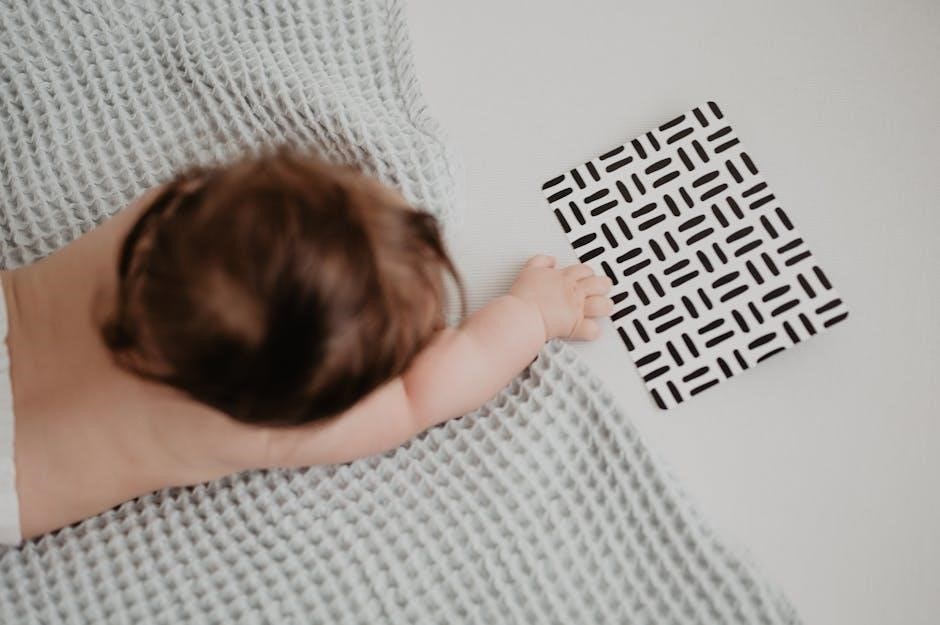
Components of a Baby Romper Pattern
A baby romper pattern typically includes front and back pieces‚ straps‚ and waistbands. Some patterns also feature pockets or snap closures for added functionality and ease.
Fabric Requirements for Baby Rompers
When sewing a baby romper‚ choosing the right fabric is essential for comfort and durability. Lightweight‚ breathable fabrics like cotton‚ bamboo‚ or muslin are ideal for summer‚ while thicker fabrics such as fleece or flannel work well for colder months. Many free PDF patterns specify fabric requirements‚ ensuring you have enough material for the design. Consider the stretchiness of the fabric‚ especially if the pattern includes elastic waistbands or adjustable straps. Soft‚ gentle fabrics are best for baby skin‚ and pre-washing the fabric before sewing is recommended to remove any chemical finishes. Always check the pattern for yardage estimates and recommended fabric types to achieve the best results for your baby romper.
Understanding the Size Chart
Understanding the size chart is crucial for sewing a baby romper that fits perfectly. Most free PDF patterns include detailed size charts‚ typically categorized by age ranges like 0-3 months‚ 3-6 months‚ and so on. These charts often list measurements such as chest circumference‚ length‚ and waist size. To ensure the best fit‚ measure your baby and compare their dimensions to the chart. Some patterns also offer adjustable features‚ like elastic waistbands‚ to accommodate growth. Always double-check the chart before cutting fabric‚ as sizes can vary slightly between patterns. If you’re unsure‚ consider sewing a muslin prototype first to test the fit. Accurate sizing ensures comfort and a professional finish for your handmade romper.
Key Features of a Good Baby Romper Pattern
A good baby romper pattern should offer versatility and ease of use. Look for adjustable features like elastic waistbands and straps to ensure a comfortable‚ grow-with-me fit. Patterns that include options for short or long legs add versatility for different seasons. Clear‚ step-by-step instructions are essential‚ especially for beginners. Many free PDF patterns also provide tutorials with visuals to guide you through sewing. Customization options‚ such as adding pockets or embellishments‚ allow you to personalize the romper. Additionally‚ a good pattern should accommodate various fabrics‚ whether knit or woven‚ ensuring flexibility in your choice of materials. These features make sewing a baby romper both enjoyable and rewarding‚ resulting in a practical and adorable garment for your little one.
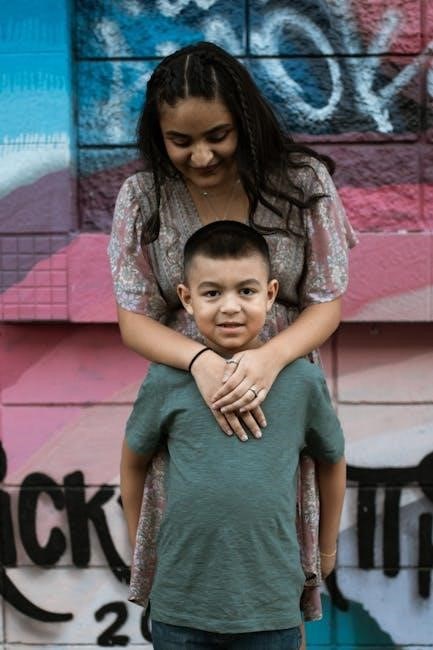
How to Download and Use a Free PDF Pattern
Download the free PDF pattern‚ print it‚ and assemble the pieces by taping them together. Cut your fabric‚ then sew following the included instructions for a perfect fit.
Step-by-Step Guide to Downloading the Pattern
Visit a trusted sewing website offering free baby romper patterns. Look for a design suitable for your skill level and desired features.
Click the download link to access the PDF file. Ensure your device has a PDF reader installed to open the document.
Review the pattern for size options and fabric requirements. Print the pattern pieces using standard settings to maintain accuracy.
Assemble the printed pages by matching the alignment markers. Tape the pages securely to form the complete pattern layout.
Cut out the fabric according to the pattern instructions‚ ensuring accurate measurements for a professional finish.
This process ensures a smooth start to sewing your baby romper‚ with clear steps for success.
Printing and Assembling the PDF Pattern
Begin by opening the PDF pattern in a reliable PDF reader. Ensure your printer is set to “Actual Size” to maintain the pattern’s scale. Print a test page to confirm accuracy‚ especially checking the included test square. Once printed‚ organize the pages according to the pattern’s layout guide. Use scissors or a craft knife to trim excess paper‚ leaving a small margin around each page. Align the pages by matching the markers provided in the pattern. Secure them with tape‚ starting from the center and working outward to avoid misalignment. Double-check that all pieces fit together seamlessly. Finally‚ cut out your fabric according to the assembled pattern‚ ensuring precise measurements for a professional finish.
Tools and Materials Needed for Sewing
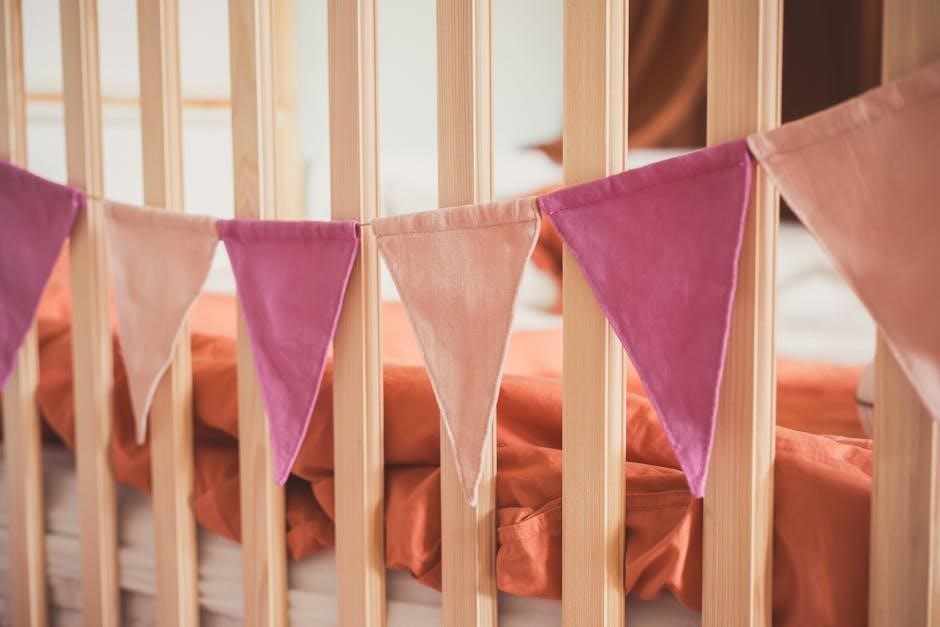
To sew a baby romper‚ you’ll need a few essential tools and materials. Start with a sewing machine and a serger (optional but recommended for finishing seams). Gather sharp scissors‚ rotary cutters‚ and a cutting mat for precise fabric cutting. A seam ripper is handy for correcting mistakes. Use high-quality thread that matches your fabric‚ along with notions like buttons‚ snaps‚ or elastic for waistbands and closures. Ensure you have measuring tapes‚ pins‚ and ironing tools for accurate cutting and pressing. Choose soft‚ breathable fabrics like cotton‚ knit‚ or linen‚ depending on the season. Lastly‚ have a well-lit workspace and a pattern-specific sewing guide to ensure a smooth process.
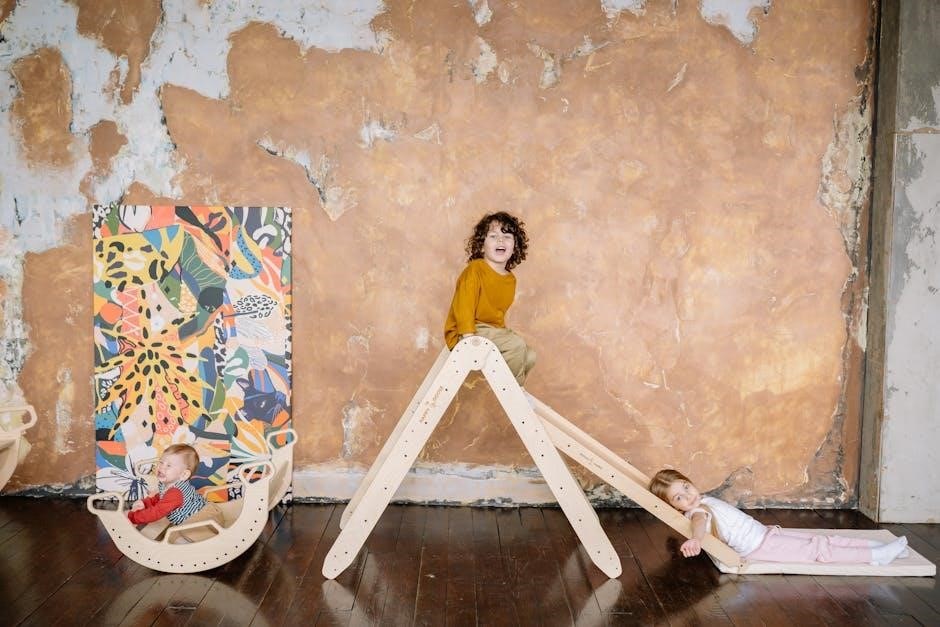
Step-by-Step Sewing Instructions
Start by cutting fabric according to the pattern‚ then sew front and back pieces together. Add straps and elastic for a secure fit‚ finishing seams neatly for durability.
Preparing the Fabric and Pattern Pieces
Begin by printing and assembling the PDF pattern‚ ensuring all pages are aligned correctly. Choose soft‚ breathable fabric suitable for baby rompers‚ such as cotton or knit. Pre-wash and dry the fabric to prevent shrinkage. Lay out the fabric according to the pattern’s cutting layout‚ ensuring the grain line is aligned. Cut out all pattern pieces accurately‚ using sharp scissors or a rotary cutter for clean edges. Transfer all notches and markings to guide your sewing. Iron the fabric to remove wrinkles before cutting for precision. Organize all pieces‚ including straps and elastic‚ to streamline the sewing process. Double-check measurements and fabric requirements to avoid shortages. This preparation ensures a smooth and successful sewing experience.
Sewing the Front and Back Pieces Together
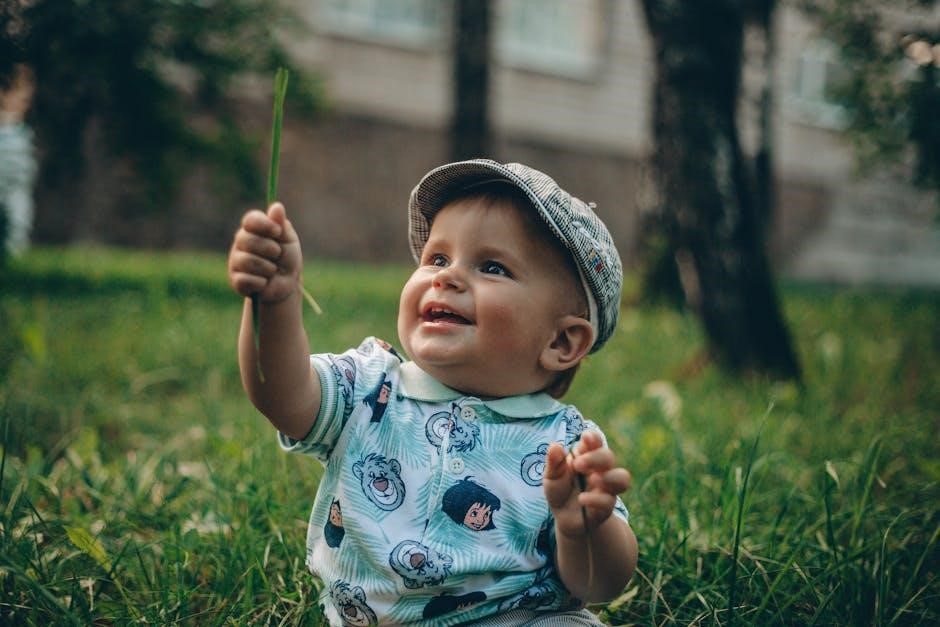
Start by aligning the front and back pieces of the romper‚ ensuring they are right sides together. Pin along the sides and crotch area to maintain alignment. Sew along the edges‚ following the pattern’s guidelines for straight‚ even seams. Backstitch at the beginning and end of each seam for reinforcement. Press the seams open or to one side as instructed by the pattern. Consider using a serger or zigzag stitch to finish the seams and prevent fraying. Complete the neck and armhole edges by folding them inward and sewing in place for a clean finish. This step-by-step approach ensures a well-constructed romper with secure and comfortable seams for your baby.
Adding Straps and Elastic Waistbands
Attach the straps by aligning them with the designated marks on the romper’s shoulders. Sew securely‚ ensuring they are evenly spaced for a balanced look. For elastic waistbands‚ cut the elastic to the desired length and sew it along the waistline‚ leaving a small opening to insert the elastic. Use a zigzag stitch or overlocker to finish the edges. Once the elastic is inserted‚ sew the opening shut. Ensure the waistband lies flat and is evenly distributed. Optional buttons or snaps can be added for adjustable straps. This step enhances comfort and ensures the romper stays securely in place‚ making it practical and stylish for babies. Properly fitted straps and elastic provide a snug yet flexible fit.
Finishing the Seams and Hem

Finishing seams and hem is crucial for a professional look and durability. Use a serger or zigzag stitch to neaten raw edges‚ preventing fraying. For the hem‚ fold the raw edge up by 1/4 inch‚ press‚ then fold another 1/4 inch‚ and sew in place. Topstitching adds a decorative touch and ensures the hem lies flat. For seams‚ press them open or together‚ depending on the pattern instructions‚ and secure with a straight stitch. Optional binding or ribbon can enhance the finish. Ensure all seams are secure and the hem is even. Proper finishing ensures the romper is both durable and visually appealing‚ making it a polished garment for your baby.
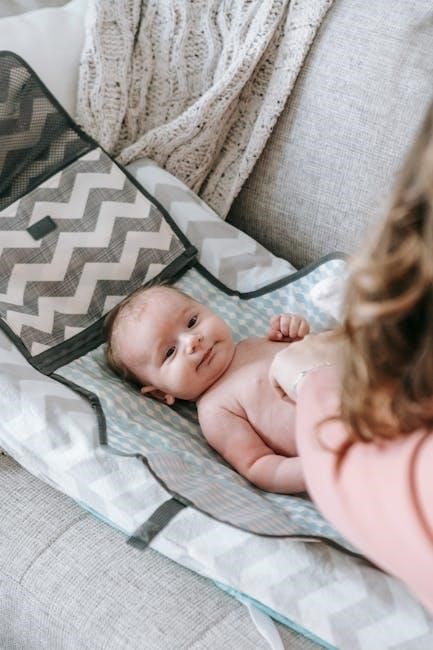
Customization Options
Personalize your baby romper with creative touches like adding pockets‚ adjusting lengths‚ or choosing short or long legs for a unique‚ functional design suited to any style or season.
Adding Pockets or Embellishments
Add charm and functionality to your baby romper with pockets or embellishments. Pockets can be sewn onto the front or sides for a practical touch‚ while embroidery‚ appliques‚ or ribbons can add a decorative flair. Choose lightweight fabrics for pockets to ensure comfort. For embellishments‚ consider simple designs like bows or small motifs that complement the romper’s style. Ensure embellishments are securely attached to avoid detachment during wear. Optional features like adjustable straps or decorative buttons can further enhance the design. These customizations allow you to create a one-of-a-kind outfit that’s both stylish and functional‚ making it perfect for special occasions or everyday use.
Adjusting the Length of the Romper
Customize your baby romper by adjusting its length to suit your preference or the season. To shorten the romper‚ measure and mark the desired length on the pattern pieces‚ ensuring symmetry. For a longer romper‚ extend the hemline or add a contrasting band for a stylish touch. Use a onesie or favorite outfit as a reference for proportion. When altering‚ maintain the original proportions to ensure a comfortable fit. Sew the side seams and hem after adjusting the length. This allows for a personalized look‚ whether you prefer a cropped style or full-length coverage. Adjusting the length is a simple way to create a unique and functional design for your little one.
Choosing Between Short and Long Legs
Deciding between short and long legs for your baby romper depends on the season and personal style. Short legs are ideal for warmer weather‚ offering breathability and ease of movement‚ while long legs provide cozy coverage during cooler months. Consider the fabric type—lightweight fabrics like cotton are perfect for short legs‚ while thicker knits suit long legs. For versatility‚ some patterns include both options‚ allowing you to mix and match. When choosing‚ think about the baby’s comfort and the activities they’ll be doing. Long legs can also be layered with tights for added warmth. Ultimately‚ the choice comes down to practicality and the look you want to achieve for your little one.

Tips for Sewing a Baby Romper
Use appropriate fabrics for comfort and durability‚ follow pattern instructions carefully‚ and ensure seams are neatly finished for a professional-looking baby romper.
Beginner-Friendly Sewing Tips
Start by choosing soft‚ breathable fabrics like cotton or knit for comfort. Always pre-wash and dry fabric before cutting to ensure proper fit. Clear your workspace and organize tools like scissors‚ pins‚ and a sewing machine. Read the pattern instructions thoroughly and watch tutorials if needed. Begin with a simple romper pattern designed for beginners. Use a walking foot for knits and a sharp needle for wovens. Press seams as you go for a professional finish. Don’t be too hard on yourself—small mistakes won’t ruin the romper. Practice on scrap fabric first to build confidence. These tips will help you create a adorable‚ functional romper for your baby. Happy sewing!
Advanced Techniques for Experienced Sewists
Elevate your baby romper sewing with advanced techniques! Add adjustable straps for a customizable fit or incorporate elastic waistbands for comfort. Experiment with fabric variations‚ such as mixing woven and knit materials‚ to create unique textures. For a polished look‚ use sergers to finish seams or add binding for a professional edge. Advanced sewists can also explore embellishments like embroidery or appliques to personalize the romper. Consider adding functional details such as pockets or snap closures for convenience. To enhance durability‚ reinforce stress points with stay tape or interfacing. These techniques allow you to create a stylish‚ high-quality romper that stands out. Perfect for those who enjoy challenging projects and want to showcase their skills. Happy sewing!
Sewing a baby romper is a delightful project‚ offering creativity and joy. With free PDF patterns‚ you can craft adorable‚ comfortable outfits for your little one effortlessly.
Final Thoughts on Sewing a Baby Romper
Sewing a baby romper is a rewarding and enjoyable experience‚ offering the satisfaction of creating something handmade for your little one. With free PDF patterns‚ you can easily craft adorable‚ comfortable outfits that suit any style or season. Whether you’re a beginner or an experienced sewer‚ these patterns provide clear instructions and versatility. From short to long legs and various embellishments‚ you can customize the romper to match your baby’s personality. The ability to use woven or knit fabrics ensures a perfect fit and comfort. Take pride in your creation and enjoy the joy of sewing something special for your baby. Share your finished projects and inspire others to embrace this delightful craft!
Encouragement to Share Your Creations
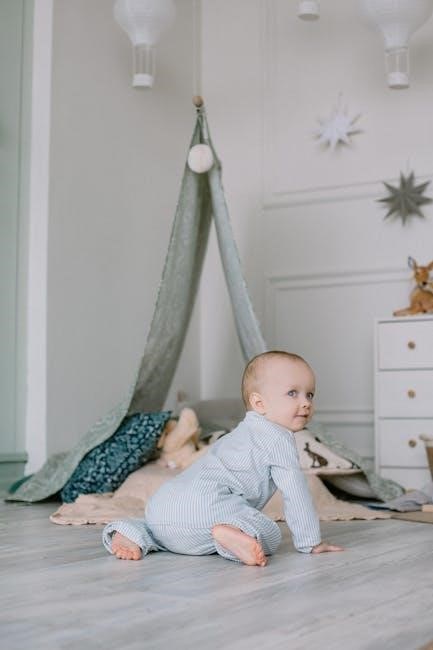
Sharing your handmade baby rompers is a wonderful way to connect with fellow sewists and inspire others. Showcase your creations on social media‚ sewing blogs‚ or crafting communities. Seeing your finished projects can spark joy and motivation for others to try sewing. Don’t hesitate to share tips‚ fabric choices‚ or modifications you made to the pattern. Your unique creations can become a source of inspiration for many. Consider using hashtags like #BabyRomperSewing or #HandmadeWithLove to reach a wider audience. Sharing your work not only celebrates your creativity but also fosters a sense of community among crafters. So‚ sew‚ share‚ and enjoy the pride of creating something special for your baby!